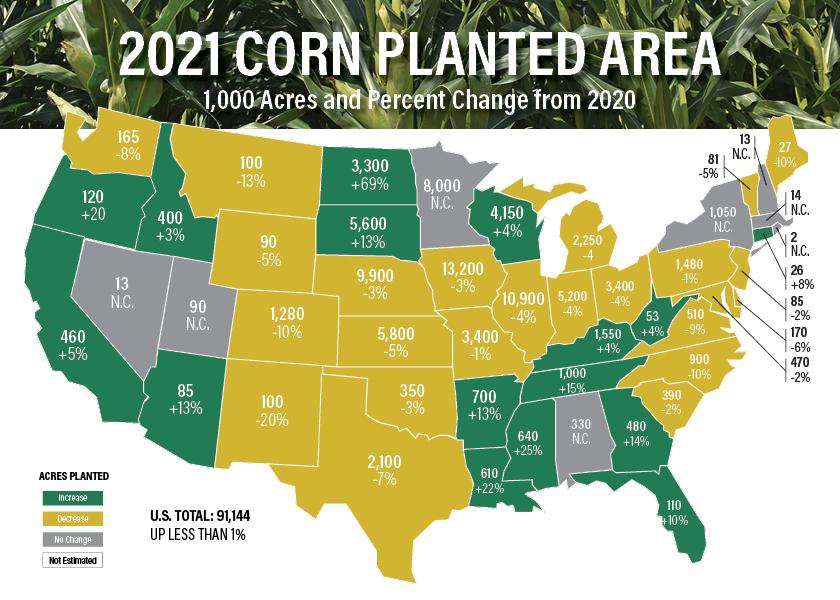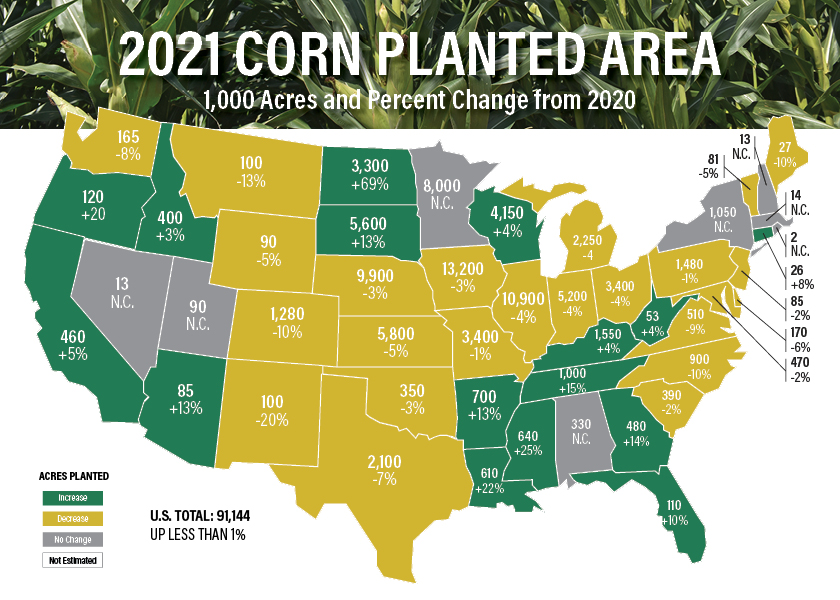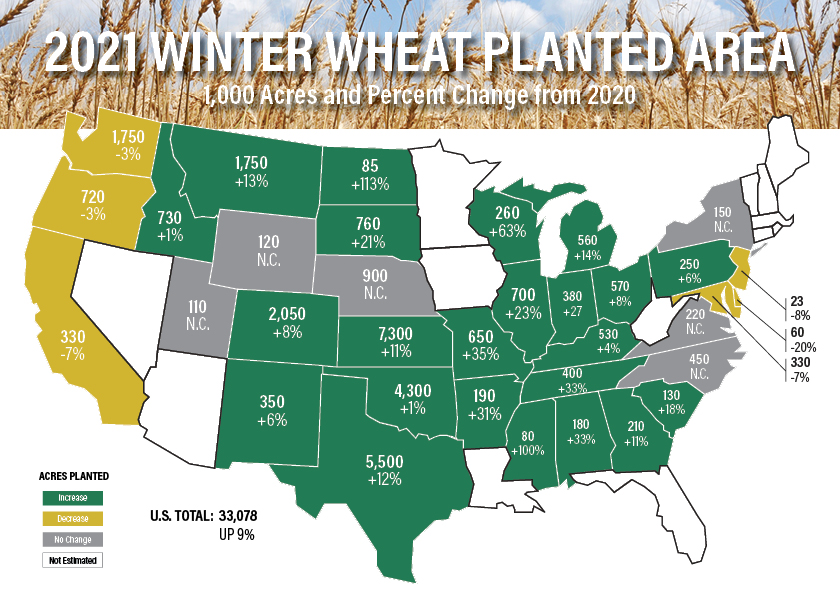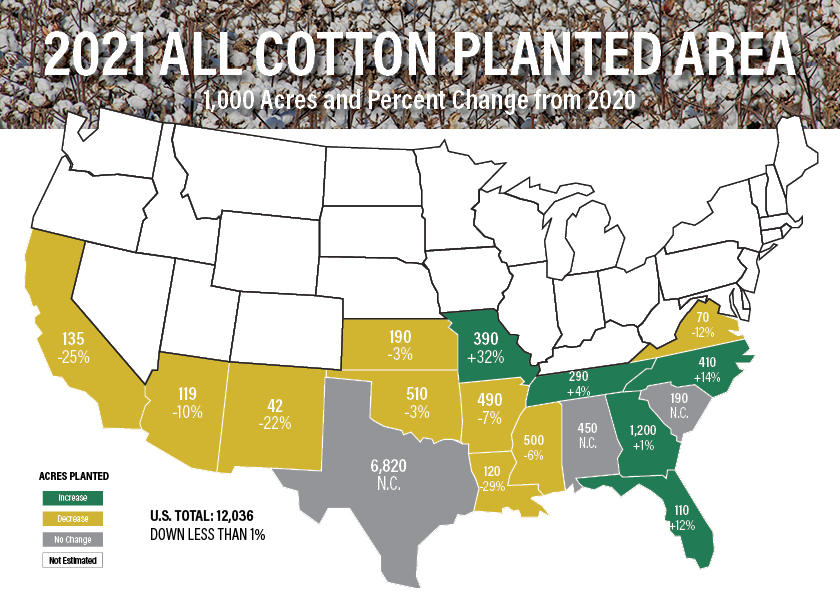Where Did the Acres Go? A State-by-State Breakdown of USDA's Prospective Planting Results

USDA's Prospective Plantings report released Wednesday, March 31 shows farmers intend to plant more acres overall in 2021. However, the survey results for corn and soybean acreage came in lower than what the trade expected.
Highlights of the first USDA farmer-based acreage survey of 2021 include:
- Corn: 91.1 million acres, up less than 1% from 2020
- Soybeans: 87.6 million acres, up 5% from 2020
- All wheat: 46.4 million acres, up 5% from 2020
- All cotton: 12.0 million acres, down less than 1% from 2020




At USDA’s Ag Outlook Forum in February, the agency pointed to the possibility of a record number of corn and soybean acres planted. However, the March 31 report revealed otherwise. University of Missouri economist Ben Brown says the forecast for 182 million combined acres is a realistic number, considering current prices and more favorable weather conditions.
“Not only did we not get to 182, we didn't even get to 180 combined corn and soybean acres,” Brown says. “We came in just under 179 million combined corn and soybean acres.”
The fact USDA is now showing a number that wouldn’t be a new record caused prices to skyrocket. The support showed up as corn and soybean prices hit limit up on Wednesday.
“The acreage number certainly is very supportive of corn and soybean prices,” Brown says. “You throw up this soybean acreage number with let's just call it a 50 bu. per acre national yield next year, and we're going to be tight on soybeans again next year and into this new crop.”
So, where did the acres go? Brown says the interesting takeaway from Wednesday’s report is that cotton didn’t lose acres, and neither did the all wheat acreage forecast. He says that’s a sign despite damage reports to winter wheat, farmers intend to keep their winter wheat acres this year. But he still thinks some acres are missing.
“To me the big story is we still have 3 million acres out there that I would consider have disappeared from our 2018 benchmark, granted in 2019 and 2020 we had a lot of weather issues,” Brown adds. “So, we still have 3 million acres that I don't think went to solar, I don't think went to development. Are those acres going to show up when we get to June? Or where are they? I think that's the big question or the big takeaway from today. That's creating some of this bullishness in the markets.”
(Reporting by Tyne Morgan; Artwork by Lindsey Pound)
Related Stories:
Prospective Plantings: 91.1 Milion Acres of Corn, 87.6 Million Acres of Soybeans







